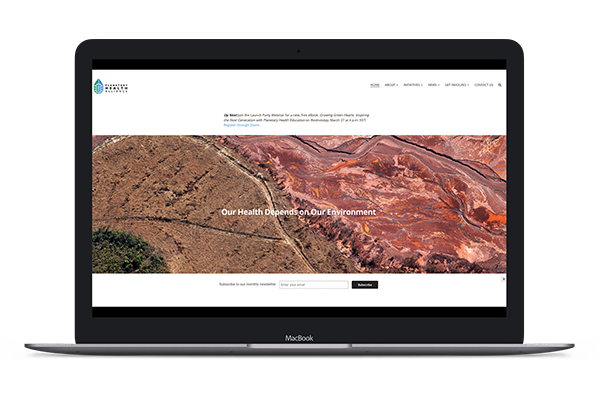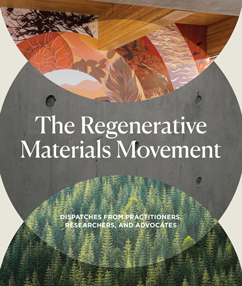 READ HABITABLE’S NEW REPORT
READ HABITABLE’S NEW REPORTThe Planetary Health Alliance is a global consortium of over 400 organizations from 60+ countries dedicated to studying and addressing the effects of global environmental change on human health.

The new Global Framework on Chemicals envisions a planet free of harm from chemicals and waste, covering the life cycle of chemicals, promoting initiatives for their sound management, and involving stakeholders from various sectors and levels to ensure a safe, healthy, and sustainable future.

This podcast conversation explores the intersection of climate change and chemical pollution.
Highlighting opportunities to address both crises simultaneously while improving public health, equity, and economic vitality, featuring experts Dr. Elizabeth Sawin and Beverley Thorpe.

This article provides an overview of the global plastic waste crisis, highlighting the environmental impact of plastic pollution and the ongoing efforts by the UN to create a legally binding international agreement to address the issue.

This article discusses the latest update to the planetary boundaries model, highlighting the inclusion of numerical guideposts for each boundary and emphasizing the interconnected factors influencing Earth’s habitability beyond climate change.

The Lower Sioux nation are pioneering a first-of-it’s-kind green experiment with a manufacturing campus that integrates vertical hemp growing, hempcrete insulation processing, and healthy home construction, aiming to address housing and job shortages while reclaiming sovereignty.

This report emphasizes the need for equitable building decarbonization efforts, highlighting the importance of centering the perspectives of vulnerable communities to address long-standing inequities in housing quality and health disparities exacerbated by current policies.

HBN and Perkins&Will have released a second report aimed at transforming the way project teams select sustainable, low-carbon products. Building on the first report titled “Embodied Carbon and Material Health in Gypsum Drywall and Flooring,” a second report investigating the intersection of carbon and material health is titled “Embodied Carbon and Material Health in Insulation”.
Insulation is a unique product category that can help reduce a building’s operational carbon emissions by optimizing performance, lowering the energy required for heating and cooling. Those same materials can also negatively impact the environment by releasing greenhouse gasses throughout their life cycle. Insulation can also contain toxic chemicals that migrate into interior spaces. This report provides guidance for designers and architects to choose the best materials that takes materials health and embodied carbon into consideration.
Key Highlights from the reports include:
- Optimized Products for Material Health and Embodied Carbon: The reports show that products improving material health and embodied carbon are available across all the examined product categories: flooring, gypsum drywall, and insulation.
- Screening for Optimized Product Types: Professionals are advised to first screen for optimized product types before selecting specific products. This approach helps teams capitalize on the fact that the biggest improvements can be made by selecting different product types within a product category.
- Navigating Potential Contradictions: Acknowledging that embodied carbon and material health considerations are sometimes contradictory, the reports emphasize the importance of reviewing the provided guidance to make informed decisions.
The reports represent a significant step forward in sustainable design practices, offering actionable insights that empower professionals to make environmentally conscious choices without compromising on carbon or health priorities.

Project teams want buildings that are healthy for people and the planet. Two sometimes competing criteria to evaluate the sustainability of building products are embodied carbon and material health.
For this case study, Perkins&Will partnered with Healthy Building Network to identify key drivers of embodied carbon and material health by looking at specific examples of product categories frequently specified in building projects. Using flooring and drywall as examples, this study identifies some examples of where paths toward low embodied carbon and safer materials align and where they conflict.
The goal of this case study is to translate the learning from embodied carbon assessment tools and material health assessment tools into actionable guidance for manufacturers, project teams, and green building programs that will allow them to optimize decisions and promote and select healthier, low-carbon products that advance a circular economy.
This chapter in ILFI’s book The Regenerative Materials Economy explores the often overlooked life cycle chemical and environmental justice impacts of building materials, focusing on insulation materials like fiberglass and spray polyurethane foam (SPF).
Through a framework rooted in green chemistry and environmental justice principles, authors Rebecca Stamm of HBN and Veena Singla of NRDC analyze manufacturing realities, environmental justice concerns, and environmental health impacts, providing recommendations to improve the industry’s sustainability and reduce the negative effects on marginalized communities.


 Health
Health Pollution
Pollution Climate Change
Climate Change Equity
Equity